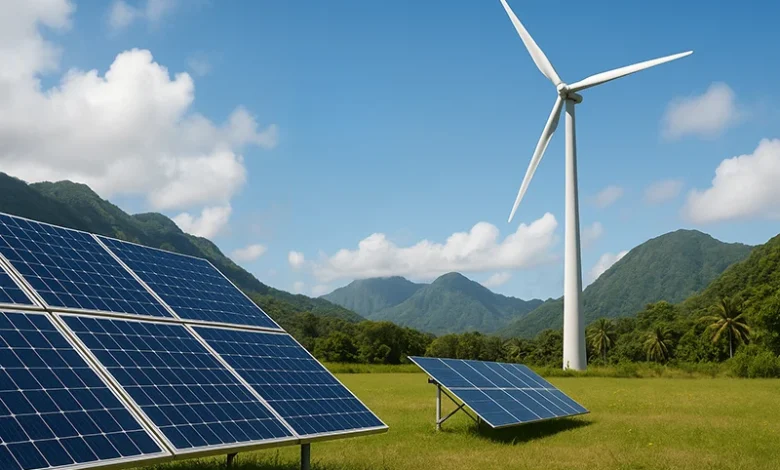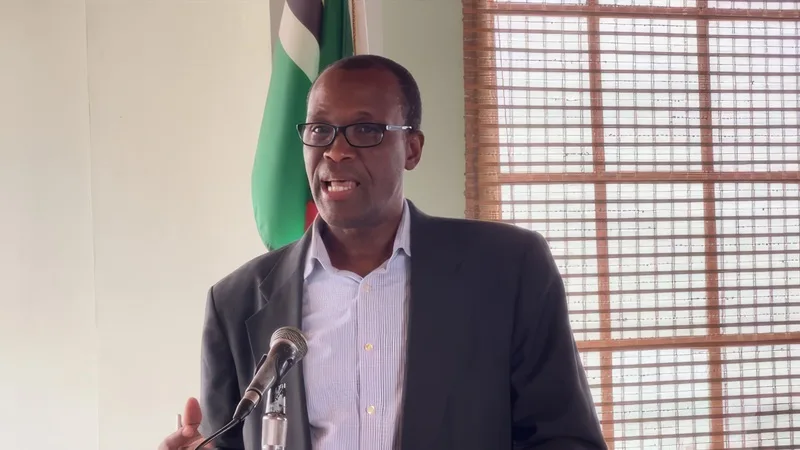Green Energy in Dominica

Green energy now anchors Dominica’s push for progress, reflecting a decisive change in how the nation approaches growth and self-reliance. Historically dependent on costly imported diesel, over 90% of its electricity in the early 2010s, Dominica has embraced renewable energy sources like hydropower, solar, geothermal, biomass, and wind. This transformation aims to reduce energy costs, increase resilience to global fluctuations in fuel prices, and establish Dominica as a climate-resilient economy.
Historical Background and Strategic Outlook
During the early 2010s, diesel generation accounted for nearly all of Dominica’s electricity, burdening households and businesses with high and unpredictable energy costs. To break this cycle, the government set an ambitious goal of achieving 100% renewable electricity by 2030. This target aligns with regional sustainability priorities such as the Basseterre Accord and reflects Dominica’s ambition to be the world’s first climate-resilient nation. The National Energy Policy (2021) and the country’s Climate Resilience & Recovery Plan outline comprehensive paths to achieving this target through investments in renewable infrastructure, regulatory reforms, and international partnerships.
Geothermal exploration took center stage. While preliminary estimates placed Dominica’s capacity between 300 and 1,390 MW, by 2020 the Dominica had installed a small 6.5 MW pilot plant. Interest grew rapidly after the Caribbean Development Bank approved a US$34.8 million loan in late 2024 for a 10 MW geothermal power plant in Laudat. Slated to be operational by late 2025, it promises reliable, 24/7 clean energy for approximately 23,000 homes. Plans also include studying the production of green ammonia, marking a notable move toward renewable energy export.
Renewable Energy Infrastructure Progress
Dominica’s current renewable power profile balances different technologies to address seasonal demand and reliability:
- Hydropower: Facilities such as Trafalgar Falls, Padu, and Laudat provide a combined capacity of around 4 MW. Though modest, they contribute consistent base-load power.
- Solar: With about 6.6 MW installed, mainly through rooftop systems and scattered small-scale projects, Dominica has unlocked only a fraction of its 45+ MW solar potential. Net-metering regulations, enacted under the 2006 Electricity Supply Act and enforced by the Independent Regulatory Commission (IRC), have fostered small-scale solar adoption.
- Geothermal: The flagship upcoming plant in Laudat, once online, will provide consistent baseload and drastically reduce reliance on diesel generators.
- Wind and Biomass: These remain nascent sectors. Remote mountainous terrain poses challenges for utility-scale deployment, although studies suggest that sites like Crompton Point could support up to 10 MW of wind power. Agricultural and forestry residues could be harnessed for biomass, offering a pathway toward rural energy resilience.
The government has also partnered with Masdar, the UAE Clean Energy Fund, and CREF to build a 5 MW grid-scale battery energy storage system (BESS). This infrastructure will support a stable grid by smoothing inconsistencies in solar and wind production and enabling microgrid capabilities during outages.
Legal and Institutional Framework
Dominica’s energy transition is enabled by solid policy foundations and regulatory tools. The updated Geothermal Energy Act (2016) and the Electricity Supply Act (2006) underpins resource exploration, drilling rights, and industry oversight. The IRC supports market entry for independent producers and enforces net-metering arrangements. These institutions collectively enhance transparency, establish investor confidence, and ensure consumer protections.
Government ministries, DOMLEC (the national utility), and the Dominica Geothermal Development Company (DGDC) coordinate closely on project implementation, capacity building, and stakeholder engagement. ESIA processes and public consultations have been conducted to ensure community concerns, especially around geothermal boreholes, are addressed responsibly.
Economic, Social, and Environmental Benefits
The shift to green energy is already delivering tangible dividends. By reducing fossil fuel imports by approximately EC$40 million annually, the country is bolstering its fiscal sustainability. Cleaner energy prices support lower household and commercial electricity bills. The development of domestic industries, such as geothermal drilling, solar installation, and battery maintenance, creates skilled jobs and boosts local technical capacity.
Geothermal energy, in particular, promises round-the-clock generation, enhancing energy security and reducing exposure to global price volatility. The anticipated ability to produce green ammonia and potentially export other renewable products offers promising economic diversification.
Environmental resilience is another key benefit. Renewable energy systems, especially battery-integrated microgrids and distributed solar, improve preparedness for hurricanes and floods by decentralizing power and reducing dependencies on vulnerable centralized infrastructure.
Challenges and Emerging Opportunities
While the green energy path is compelling, several obstacles remain:
- Land constraints pose hurdles for large-scale solar, wind turbines, and battery farms, due to Dominica’s steep and forested terrain. Public concerns about environmental impacts from geothermal drilling have been addressed through comprehensive ESIA studies and stakeholder dialogue.
- Technical expertise remains limited, though programs under bilateral partnerships, like ECPA initiatives, have trained local technicians and engineers for geothermal construction, solar deployment, and battery system management.
- Moving forward, strategic priorities include integrating geothermal with green hydrogen production, expanding rural solar, and exploring biomass energy in agricultural sectors. Ongoing regulatory updates and incentive schemes are designed to foster private investment and consumer-driven small renewables adoption.
Vision for a Renewable, Resilient Future
Dominica is set to become a renewable energy leader not just in the Caribbean but globally. The upcoming geothermal power plant will be the first of its kind in CARICOM, positioning the country for regional energy cooperation. Financial backing from multilateral institutions and climate funds strengthens both technical planning and implementation.
As climate-resilient infrastructure becomes part of wider national rebuilding, the Dominican green energy strategy offers more than cost savings, it exemplifies a pathway for small islands aiming to achieve sustainable, independent, and adaptable growth.
List of Key Infrastructure Projects
- 10 MW geothermal plant in Laudat and 5 MW battery storage system
Dominica’s energy transition exemplifies a path toward sustainable prosperity, anchored in clean power, empowered communities, and resilience to climate disruptions. Continued investment, public–private collaboration, and policy innovation will be essential to deliver on the promise of green, affordable, and secure energy for all Dominicans.




